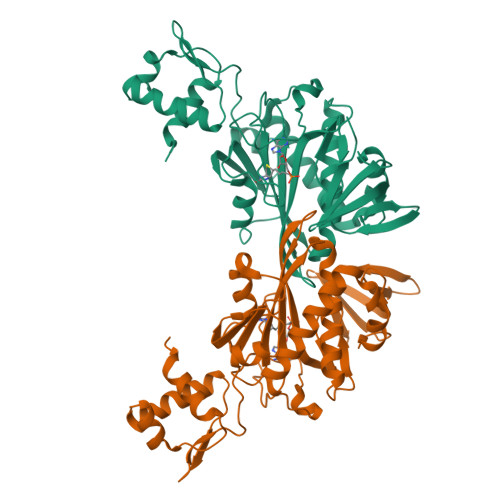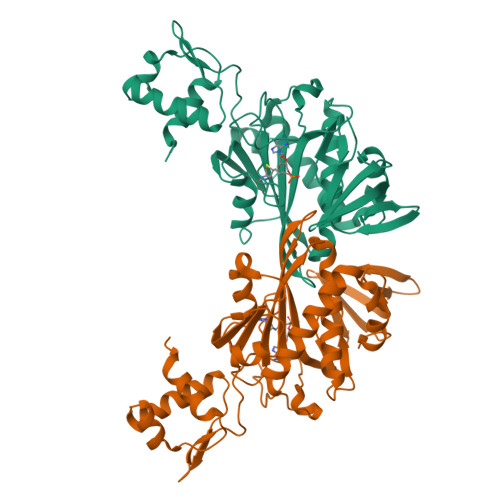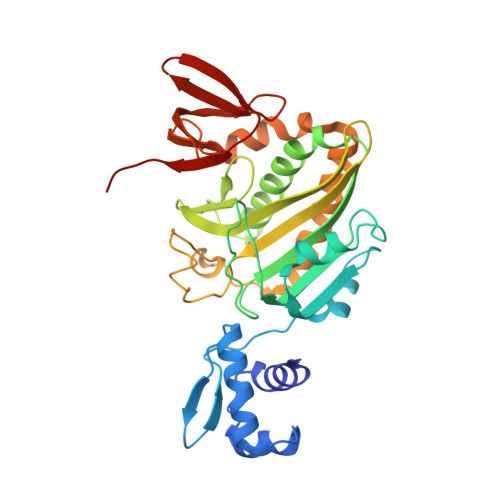Co-repressor Induced Order and Biotin Repressor Dimerization: A Case for Divergent Followed by Convergent Evolution.
Wood, Z.A., Weaver, L.H., Brown, P.H., Beckett, D., Matthews, B.W.(2006) J Mol Biology 357: 509-523
- PubMed: 16438984
- DOI: https://doi.org/10.1016/j.jmb.2005.12.066
- Primary Citation of Related Structures:
2EWN - PubMed Abstract:
BirA catalyzes the adenylation and subsequent covalent attachment of biotin to the biotin carboxyl carrier protein (BCCP). In the absence of apo-BCCP, biotin-5'-AMP acts as a co-repressor that induces BirA dimerization and binding to the bio operator to repress biotin biosynthesis. The crystal structures of apo-BirA, and BirA in complex with biotin have been reported. We here describe the 2.8A resolution crystal structure of BirA in complex with the co-repressor analog biotinol-5'-AMP. It was previously shown that the structure of apo-BirA is monomeric and that binding of biotin weakly induces a dimeric structure in which three disordered surface loops become organized to form the dimer interface. The structure of the co-repressor complex is also a dimer, clearly related to the BirA.biotin structure, but with several significant conformational changes. A hitherto disordered "adenylate binding loop" forms a well-defined structure covering the co-repressor. The co-repressor buttresses the dimer interface, resulting in improved packing and a 12 degrees change in the hinge-bending angle along the dimer interface relative to the BirA.biotin structure. This helps explain why the binding of the co-repressor is necessary to optimize the binding of BirA to the bioO operator. The structure reveals an unexpected use of the nucleotide-binding motif GXGXXG in binding adenylate and controlling the repressor function. Finally, based on structural analysis we propose that the class of adenylating enzymes represented by BirA, lipoate protein ligase and class II tRNA synthetases diverged early and were selected based on their ability to sequester co-factors or amino acid residues, and adenylation activity arose independently through functional convergence.
Organizational Affiliation:
Institute of Molecular Biology, University of Oregon, Eugene, OR 97403-1229, USA.

















